Drawer Box Width for Blum Slides
Blum installation instructions go out a lot to be desired but the hardware is great. I pretty much always use Blum Tandem plus Blumotion for my drawer slides. One time you learn how to brand sense of the drawer sizing instructions, Blum drawer slides are much easier to install than side mounted drawer slides. Once your drawers are build, Installation is a breeze.
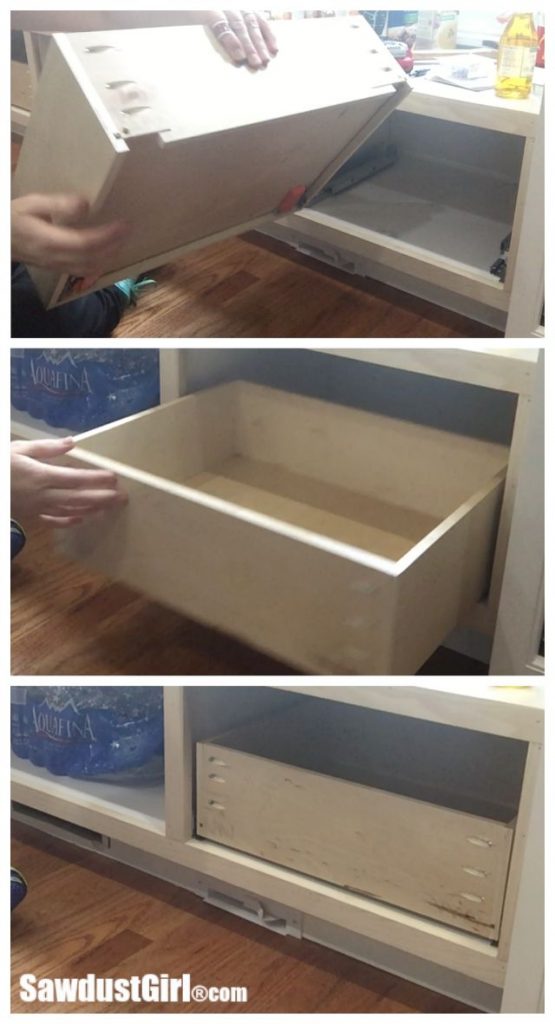
How to Build a Drawer for Blum Drawer Glides
Every time I install these Blum drawer runners I have to wait up the installation guide, Notice the section on notching and boring for the drawer runner and so interpret the metric measurements into imperial so my encephalon volition recognize what the instructions are telling me to do. They finally started including metric and purple measurements so I don't have to translate. Aye! But when I await at this diagram, information technology makes my head spin a bit.
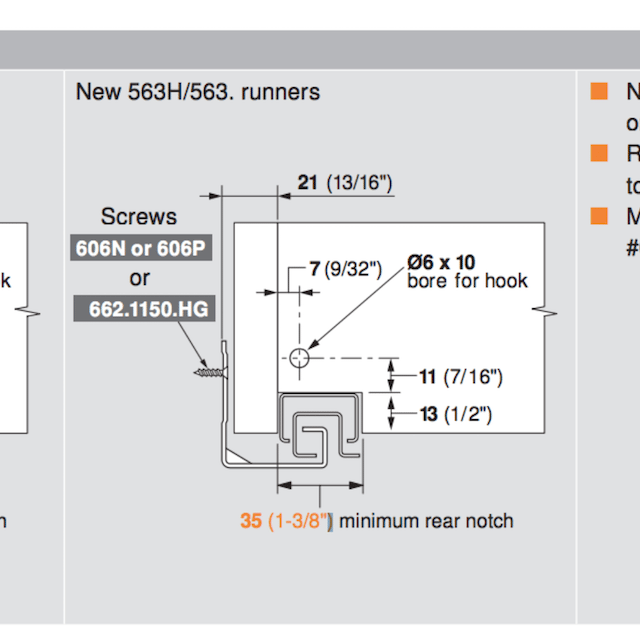
I think it could be done ameliorate. I demand an instructions that make sense to my brain then I created the following instructions for anyone (including myself side by side time I need this info) to utilize when they are picking out drawer runners and so figuring out how to notch and bore for the locking mechanism.
Locking mechanisms
You lot have to order a correct and a left locking mechanism for each drawer slide pair you purchase. (The slides come in pairs. The locking mechanisms are sold individually.)
So, make sure that for EACH drawer y'all are building you order:
- 1 pair of drawer slides (sold as a pair)
- 1 Left locking mechanism
- 1 Right locking mechanism
- Screws (I use #half-dozen i/2″ for locking mechanism and #8 5/8″ for drawer slide)
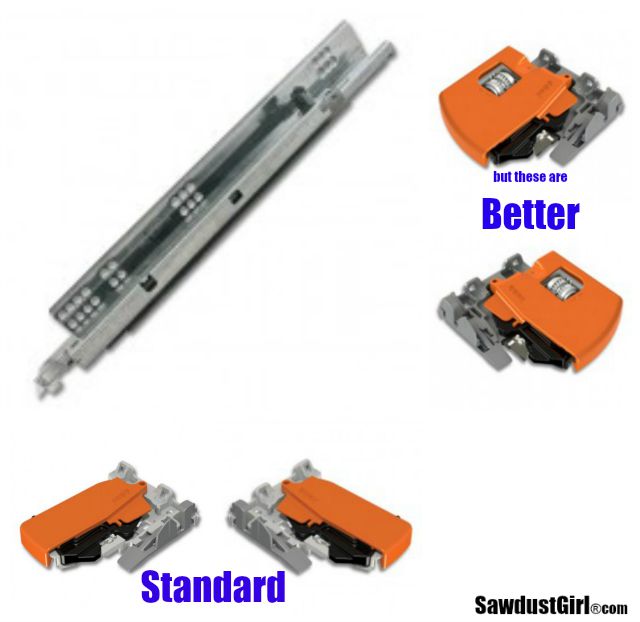
I shop around for the best price whenever I need a new batch.
Important: You lot take to guild the correct glides for the thickness for the drawer material you are using. Most of the states build drawers with 1/two″ to 5/eight″ thick material. The instructions in this post are specifically for the 563H Drawer runner for 1/two″ -v/eight″ material!
*Besides, the Blum drawer runners come in 3″ increments. Decide which runners volition work in your cabinet and then build your drawer the same length equally your runners.
Size your drawer
- Measure your cabinet opening.
- Easy interpretation of the below Blum diagram: If you're using ane/two″ plywood to build your drawers, subtract 5/viii″ from your cabinet opening to determine the exterior width of your drawer.
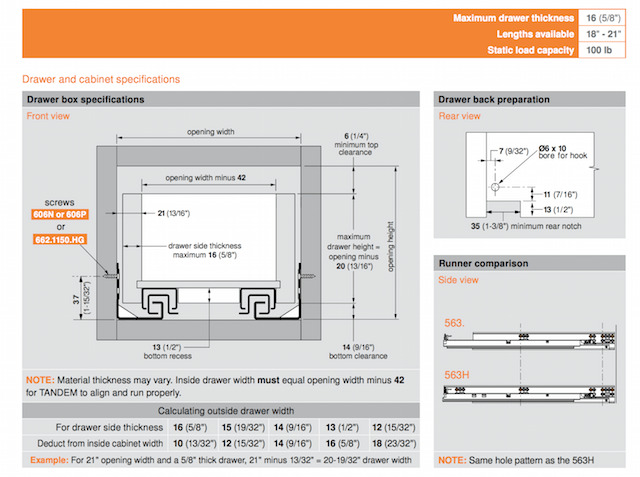
The sides should extend the full length of your drawer. The front and dorsum should be installed INSIDE your sides. With one/two″ plywood, the math for the width of your drawer front and dorsum is easy — subtract ane″ from the outer width.

The front and dorsum parts can be attached to the drawer sides in a number of ways: the easiest of which are loose tenons, dowels or pocket screws.
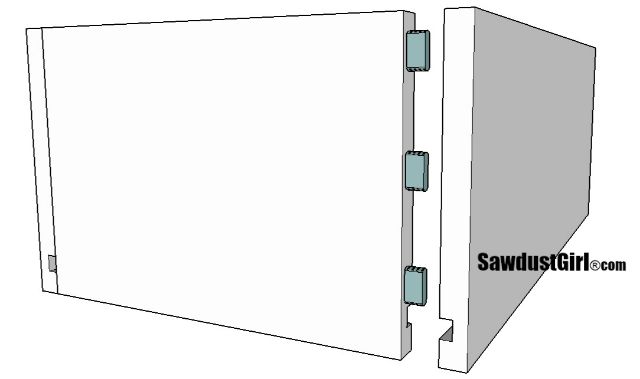
Nearly people accept a pocket hole jig so that'due south what I'one thousand using for this tutorial.
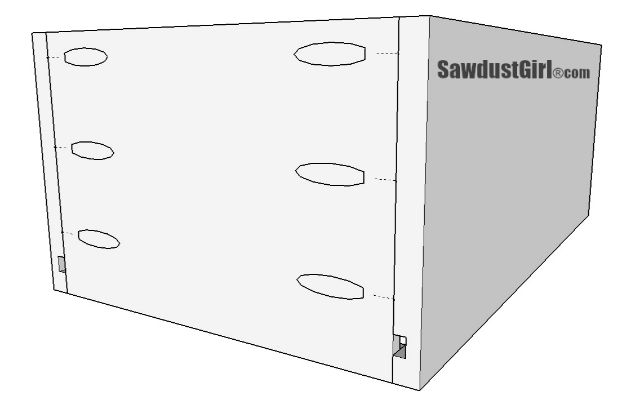
Set up the drawer back for the drawer runners.
Before you build your drawer, you need to prepare the drawer back. It's easier to do this earlier associates than after. You demand to drill a 1/4″ hole and cut a notch for your drawer glide. You need to do this on both the right and left side of your drawer back. I have a tutorial for the Blum hole drilling jig I created. It holds the drawer dorsum and allows one to drill the hole in the exactly correct location without measuring for every unmarried hole.
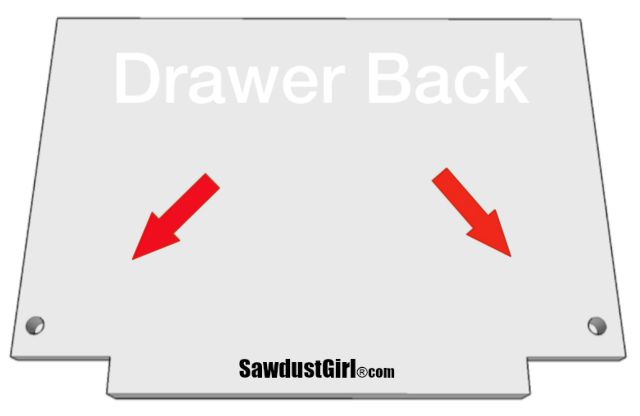
Brand sure you are doing this on the Back side of the drawer back. The groove for the drawer bottom is on the inside of the drawer. The opposite side of that groove is the drawer back (and the bottom of the drawer back — back.)
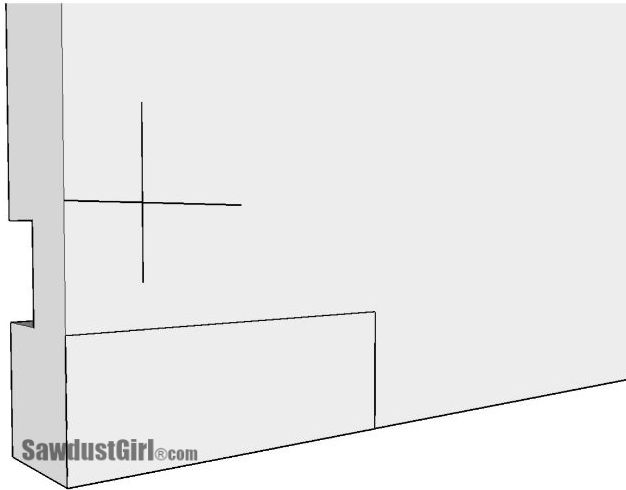
IMPORTANT: 563H Drawer runner is for 1/2″ -5/viii″ thick drawer material and that is what these specific notching and deadening measurements are for.
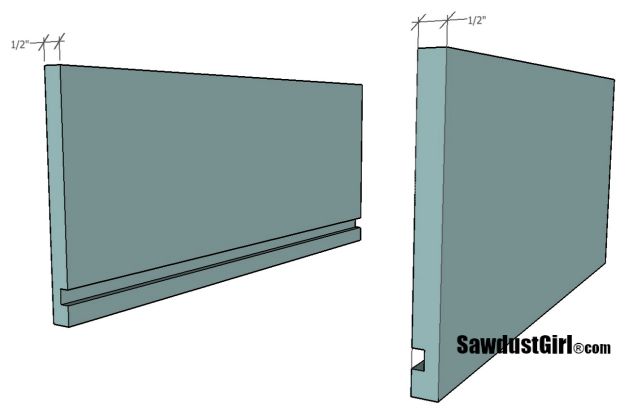
The notch you'll need to cut out is i/2″ tall by 1 iii/8″ broad (minimum). You can cutting that out with a jigsaw.

The 1/4″ hole you need to drill out is as shown below. 9/32″ is hard to observe on a tape measure so I discover it easier to employ a metric ruler for this office.
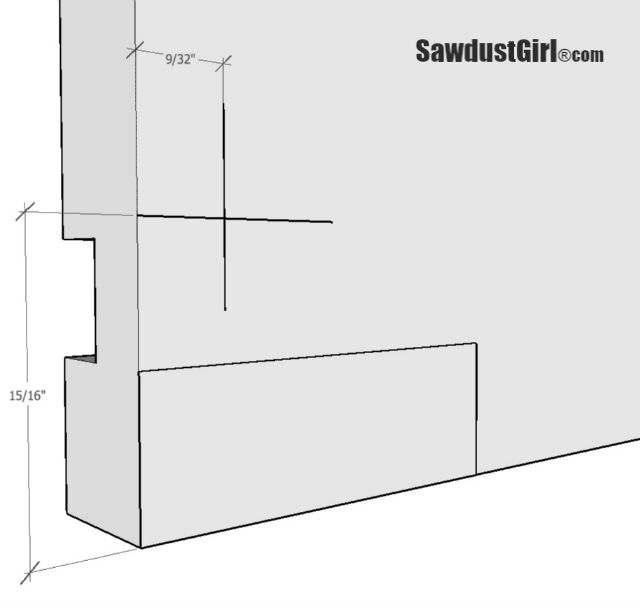
7mm over and 24mm upward is easier to find on a metric ruler.
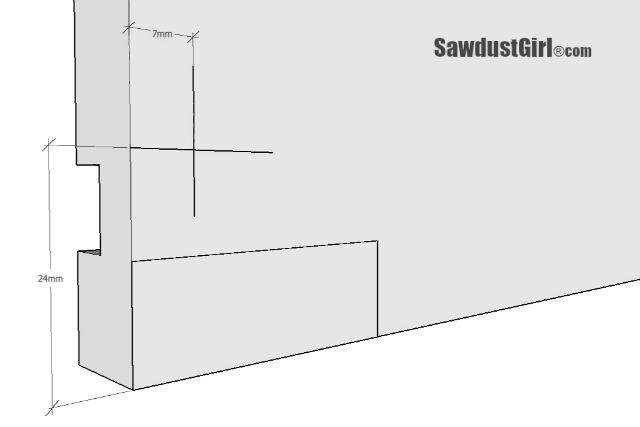
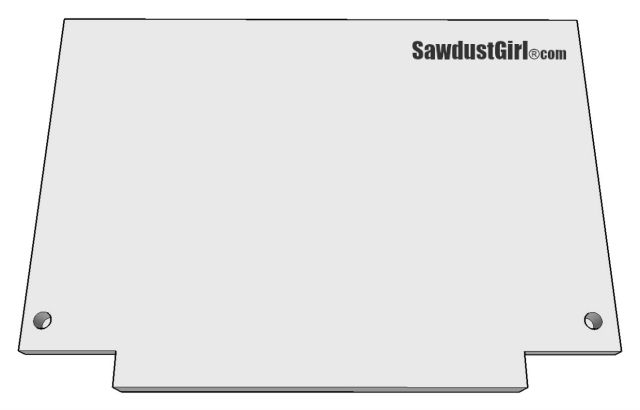
You can even print out the PDF versions of my drawings for convenience.
- Bottom notch
- Location for hole
- Location for hole in mm
Build your drawer

Using floating tenons, dowels or pocket screws. Make certain you Practise NOT drill a pocket hole on or too well-nigh the groove for the drawer bottom. If you drive a screw in the groove, the drawer bottom volition not slide into identify.
When yous're drawers are built and you're ready to install, check out my tutorial and tips for installing drawers with Blum Tandem with Blumotion drawer slides.
gullettgocielince71.blogspot.com
Source: https://sawdustgirl.com/how-to-choose-and-use-blum-tandem-plus-blumotion-drawer-runners/